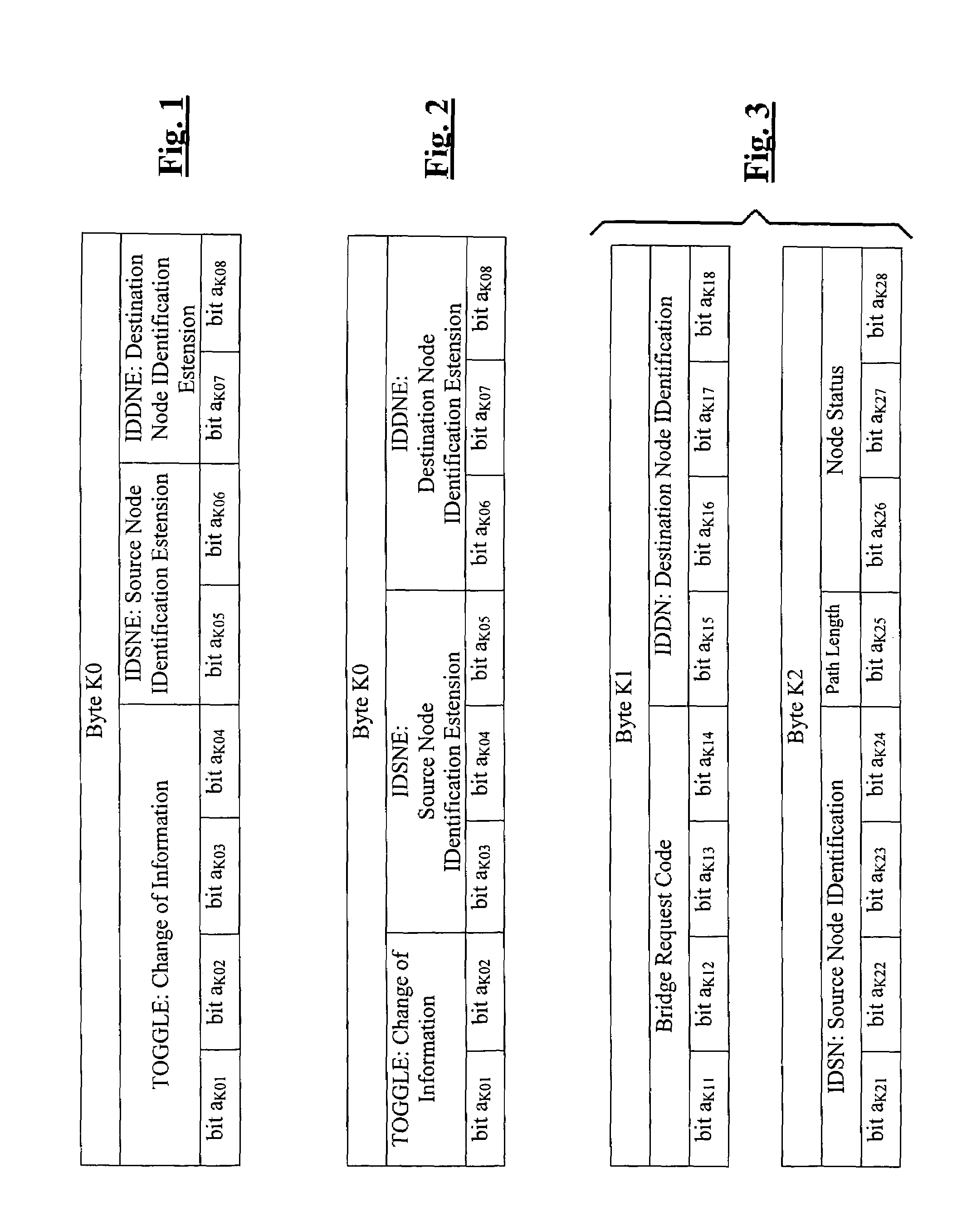Time management of information distributed on K-bytes in SDH frames
a technology of k-bytes and time management, applied in the field of synchronous telecommunication networks, can solve the problems of increasing the number of nodes manageable by protection, and a high limitation in the development of communication networks, and achieve the effect of increasing the switching rate in the telecommunications ring
- Summary
- Abstract
- Description
- Claims
- Application Information
AI Technical Summary
Benefits of technology
Problems solved by technology
Method used
Image
Examples
Embodiment Construction
[0018]While the present description and annexed claims mainly refer to SDH transmissions just for clarity reasons, it should be noted that this does not constitute a limitation due to the fact that the present invention clearly equally applies to SONET. Unless otherwise specified, whenever only “SDH” is mentioned, this also includes “SONET”. The same is for Recommendations: while only ITU-T Recommendations are mentioned, this is just for reducing the description length, a man skilled in the art will easily be able to identify the corresponding equivalent ETSI Recommendations.
[0019]Therefore, in accordance with the present invention, one of the “available” bytes, namely a byte whose function has not been defined and / or standardized yet, of the MSOH (to this end reference should be made to the above-cited ITU-T Recommendation G.841) is used. Just for convenience, this being not a limitation, in this description such a byte will be defined as “K0 byte” or “K3 byte”.
[0020]With reference...
PUM
 Login to View More
Login to View More Abstract
Description
Claims
Application Information
 Login to View More
Login to View More - R&D
- Intellectual Property
- Life Sciences
- Materials
- Tech Scout
- Unparalleled Data Quality
- Higher Quality Content
- 60% Fewer Hallucinations
Browse by: Latest US Patents, China's latest patents, Technical Efficacy Thesaurus, Application Domain, Technology Topic, Popular Technical Reports.
© 2025 PatSnap. All rights reserved.Legal|Privacy policy|Modern Slavery Act Transparency Statement|Sitemap|About US| Contact US: help@patsnap.com


